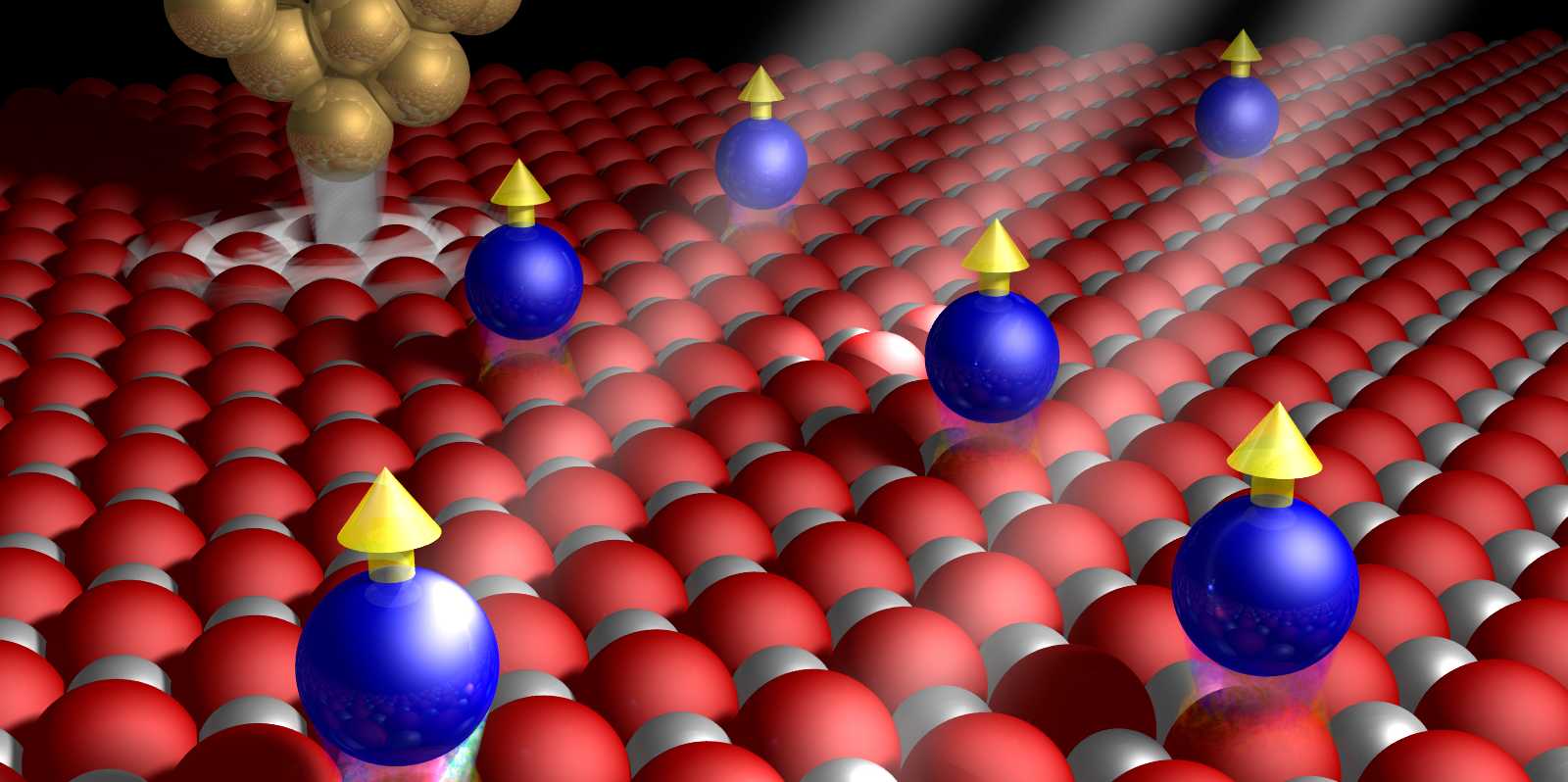At the frontiers of magnetism
The smallest possible magnets are the size of a single atom. Now scientists have reached the limits of optimisation of the tiny particles: they have created single atom magnets that are as strong and stable as is physically possible for the class of atoms used.
A research team led by scientists from ETH Zurich, EPFL and IBM have managed to create extremely small magnets in the lab, as strong and stable as their tiny size allows. The magnets comprise a single cobalt atom located on an ultra-thin magnesium oxide surface. “Our aim was to identify the absolute limits of miniaturisation of magnets using a model system,” explains Pietro Gambardella, Professor of Magnetism and Interface Physics at ETH Zurich. Gambardella is one of the leaders of the study published in the journal Science.
The scientists produced the single-atom magnets by depositing a tiny amount of cobalt on a magnesium oxide surface so that isolated cobalt atoms adhered to the surface. To determine the physical properties of the magnets, the researchers examined them with a scanning tunnelling microscope and the synchrotron at the Paul Scherrer Institute. The measurements revealed that the system with the individual cobalt atoms on magnesium oxide is magnetically three times stronger, atom for atom, than one made of pure cobalt.
Model system for information storage
In addition, the single-atom magnets are very stable against external perturbations, which is a prerequisite for technological applications: reversing the polarity requires a thousand times more energy per atom – scientists speak of the magnetic anisotropy energy – than with pure cobalt. “Our system has the highest magnetic anisotropy energy per atom for the transition metals, i.e. the most common metals from which magnets are usually manufactured,” says Gambardella.
The researchers also managed to present a detailed description of which laws of quantum physics play a role in these mini-magnets. In the quantum world, effects are often short-lived. At low temperatures, the single-atom system remains magnetised for 200 microseconds, which is comparatively long and represents a record for transition metals. “Miniaturisation is limited physically by the atomic structure of the material. In our work, we have now shown that it is possible to create relatively stable magnetic components out of single atoms; i.e. the smallest possible structure,” says the ETH professor.
The model system used is one for the miniaturisation of MRAM (Magnetoresistive Random Access Memory) storage media, says Gambardella. This is a class of storage media on which information can be stored permanently without the need to continually refresh the data, as is the case with the RAM storage used in PCs. Today, MRAM is used in special applications, such as aircraft and satellite control systems, due to its resistance to ionizing radiation. Efforts are afoot, however, to develop MRAM for wider use in PCs as well.
Literature reference
Rau IG et al.: Reaching the Magnetic Anisotropy Limit of a 3d Metal Atom, Science, online publication 8 May 2014, doi: external page 10.1126/science.1252841
